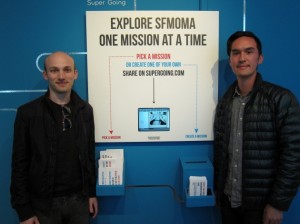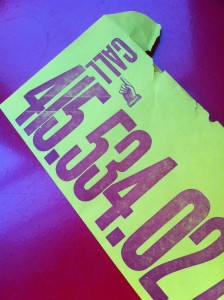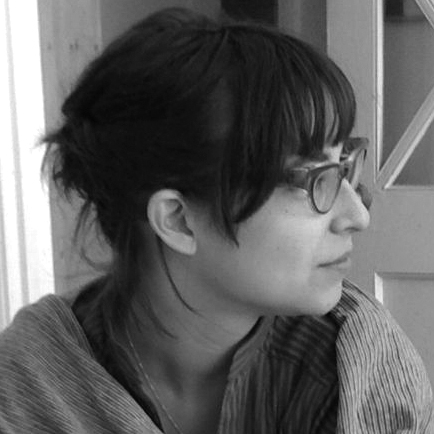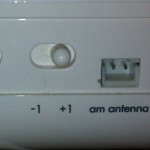“Damn,” I thought silently as I opened the envelope from The Peculiar Scholarship of Dr. Bedcannon. It’s going to be embarrassing if I can’t figure out what to do next.
You see, I’ve been eagerly awaiting the opening of the SF MOMA Education Center’s Art Game Lab, ever since they put out the request for proposals during the summer of last year. The envelope in my hand belonged to one of the five games¹ in the exhibit. It opened mid-January and I recently had the pleasure of dropping in to play. Like many other art institutions, SF MOMA has been dipping it’s toe into the gaming pool in an attempt to find new ways to engage visitors in the works on display.
Although games have been actively explored by artists since the Dadaists, when games don’t have highly recognizable artists’ names attached to them, they’re relegated to the back corners of museum education centers. Unfortunately, this is also the case with ‘Art Game Lab,’ but it’s worth a visit back into the depths of the Koret Visitor Education Center. While the installation doesn’t do the games themselves many favors – each game has roughly 3’x3′ worth of poster to convince you to participate – there’s plenty of playful and provocative content to explore.

"I Know What I Like" by The Institute for Aesthletics, design by Lewis McGuffie (photo by Gayle Laird)
Curiously, although the call for proposals mentioned the availability of iPod Touches and computers as platforms for the games, all of the games used the lowest tech possible: take-away paper cards. Of the five games curated into the exhibition, three used game mechanics that fell into a similar pattern of ‘observe artwork, react, and document.’
The Institute for Aesthletics‘ “I Know What I Like” asks visitors to choose a character from amongst a set of elegantly illustrated cards with names like “Pugachev” and “Grendel.” Each card has a series of three tasks categorized as stealth, hands-on, and bold. The stealth tasks present miniature curating exercises, asking the player to choose artworks relating to some attribute of the character on the front of the card. The hands-on tasks ask players to do some creative thinking around the artwork. I enjoyed Pugachev’s suggestion that I “write a manifesto using found text from the museum artwork labels” (this bore no small resemblance to one of the missions of a neighboring game, Super Going). The bold tasks all fell into the category, at least for me, of thought experiments only – they were so over-the top (but fun to imagine, like rounding up troops and inciting a revolt inside the museum). Actually, all of the tasks on the cards seemed a little like thought experiments. While they had clear instruction to document my tasks, the cards had no indication of how I could share what I’d done or view what others had done. This information was provided in the education center where I picked up the cards, but leaving this bit of information off the cards felt much more like an indication of how seriously the game maker expected me to follow through on these instructions.
Another mission/task based game was “Super Going” by Situate.² Super Going offered a single, one sentence task, printed boldly on a postcard. The tasks in the museum extend a larger web-based game that grows on Situate’s previous work with SF0. Several assignments follow the model of locate artwork, react, and document, such as: “Critique a work of art using facial expressions only. O_o” (which I completed). While others invite the participant to transgress boundaries of museum conduct: “Install your own art at SF MOMA.” or “Silently follow another visitor around SF MOMA. Document their encounters with the art.” This last one recalls Sophie Calle and Vito Acconci‘s similar gestures, adding a meta-critique to the participant’s actions. All of the activities are expressed in short sentences, allowing the player to determine what qualifies as fulfillment of the assignment. They also provide a URL on the back of each take-away card to share your documentation and view other player’s efforts. These two considerations make these assignments much more inviting than the seemingly similar ones provided by The Institute for Aesthletics.
The last of the games that I put in the ‘observe, react, and document’ category is perhaps the most focused in terms of proposed activities. “Dialogues in Motion” by Sudhu Tewari and Benjamin Carpenter presents a series of gestures that they suggest players make whenever they hear or read one of twelve “Art Words” as they progress through the SF MOMA galleries. Unlike “I Know What I Like” or “Super Going,” there’s no call to digitally document and share on the web. Instead they offer a bingo-grid allowing players to mark off the gestures as they complete them. While I desperately wanted to see someone breaking out into modern dance in the middle of a gallery, I myself didn’t play. Without the presence of a willing co-player, I couldn’t get across the hurdle of embarrassment. This game also remained more of a mental exercise, but one I could imagine being a popular family activity.
For me, the stand-out of the show was the Elsewhere Philatelic Society‘s “The Peculiar Scholarship of Dr. Bedcannon.” Now, in this case, I’m most certainly biased. The Elsewhere Philatelic Society (EPS for short) grew out of a group of dedicated players of the Games of Nonchalance on which I worked as an experience designer and producer. It all starts with a standard letter-sized envelope. A phone call to the number stamped on the exterior of the envelope sets the scene, introducing you to Dr. Bedcannon and his somewhat fractious relationship with the formalities of the institutional art world. And then you’re off – wandering the galleries, following a beautifully designed map and cryptic instructions. When I first opened the envelope, I think I must have had the same feeling that so many visitors to the Jejune Institute have told me about over the years. That moment of first looking at some printed instructions and being utterly entranced and confused. Then looking again, moving through the physical space of the museum and feeling the comprehension flood through me. I’m a critical person (hopefully as much of my own work as that of others), so yes, there were parts that I wished were handled differently, but these paled in comparison to my overall enjoyment of the experience. Dr. Bedcannon even swept up my companion who cautioned before we started “I’ll just watch and follow you.”
As an exhibition, Art Game Lab felt a little uneven and tucked away. While it encompassed some interesting ideas about different ways to engage the museum, its artwork, architecture, and other visitors, it lacked the internal cohesiveness of some of the games it contained. It seemed like a tentative experiment. But an experiment in the right direction – one I hope gives the SF MOMA more confidence in designing, commissioning, and incorporating games and experience design into its galleries in the future. If you’re interested in ways that our cultural or educational institutions can be more playful, consider a visit to Art Game Lab.
1. Careful readers will note that I only reviewed four of the five games. The fifth game in the exhibition is a pair of SF MOMA-specific “Didatic Mad Libs.” These didn’t really grab my interest from a design standpoint (they didn’t really push the Mad Libs concept anywhere unexpected) or by how they made visitors interact with the museum (the museum connection was in the content of the text of the Mad Lib, and could be completed anywhere).
2. Full disclosure: Sam Lavigne and Ian Kizu-Blair, the founders of Situate are friends – so this may be another case where my review might be a little biased. Of all the games in the exhibition, I knew the most about what to expect from this one as it extended the Super Going structure already in place.



